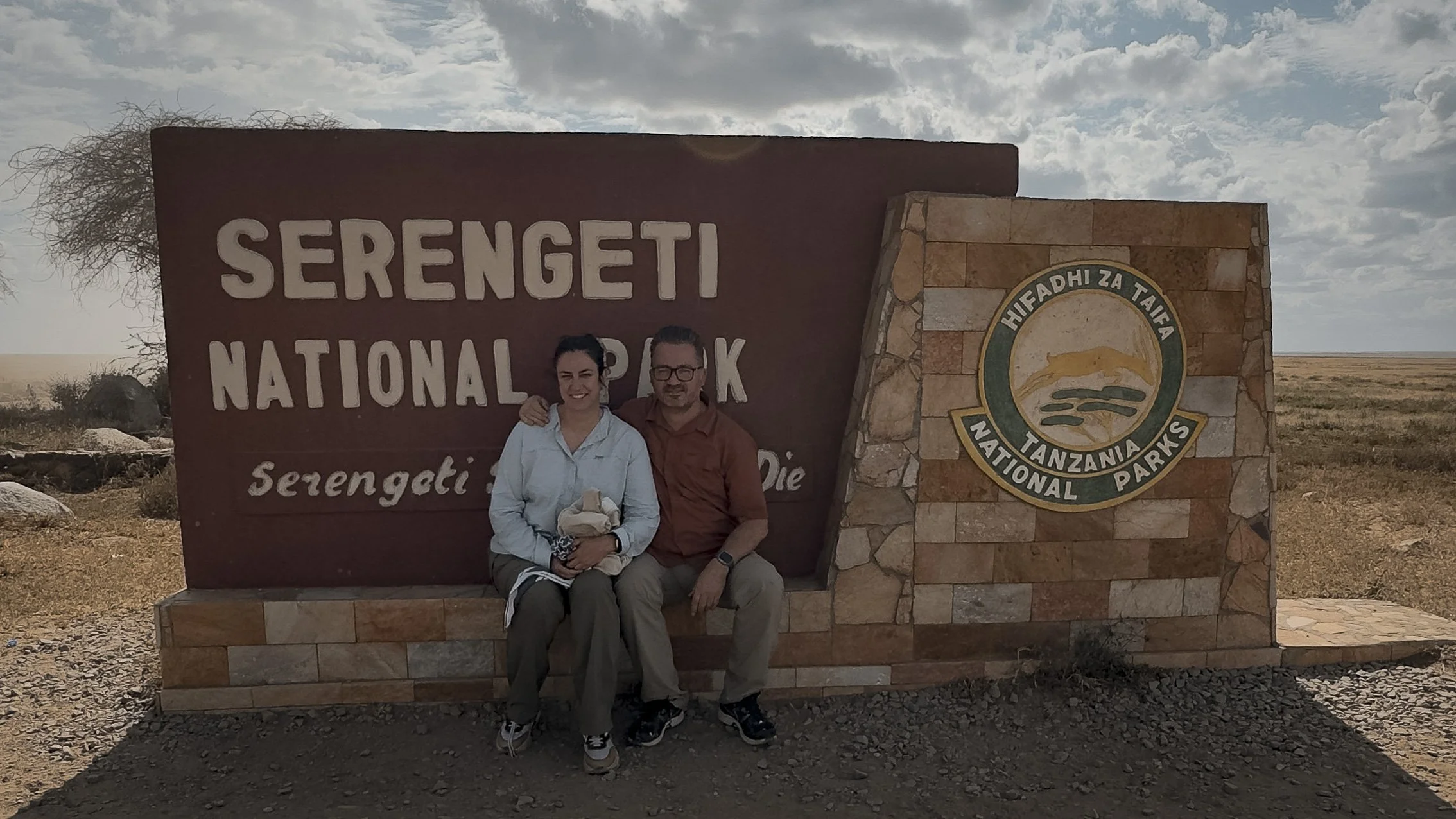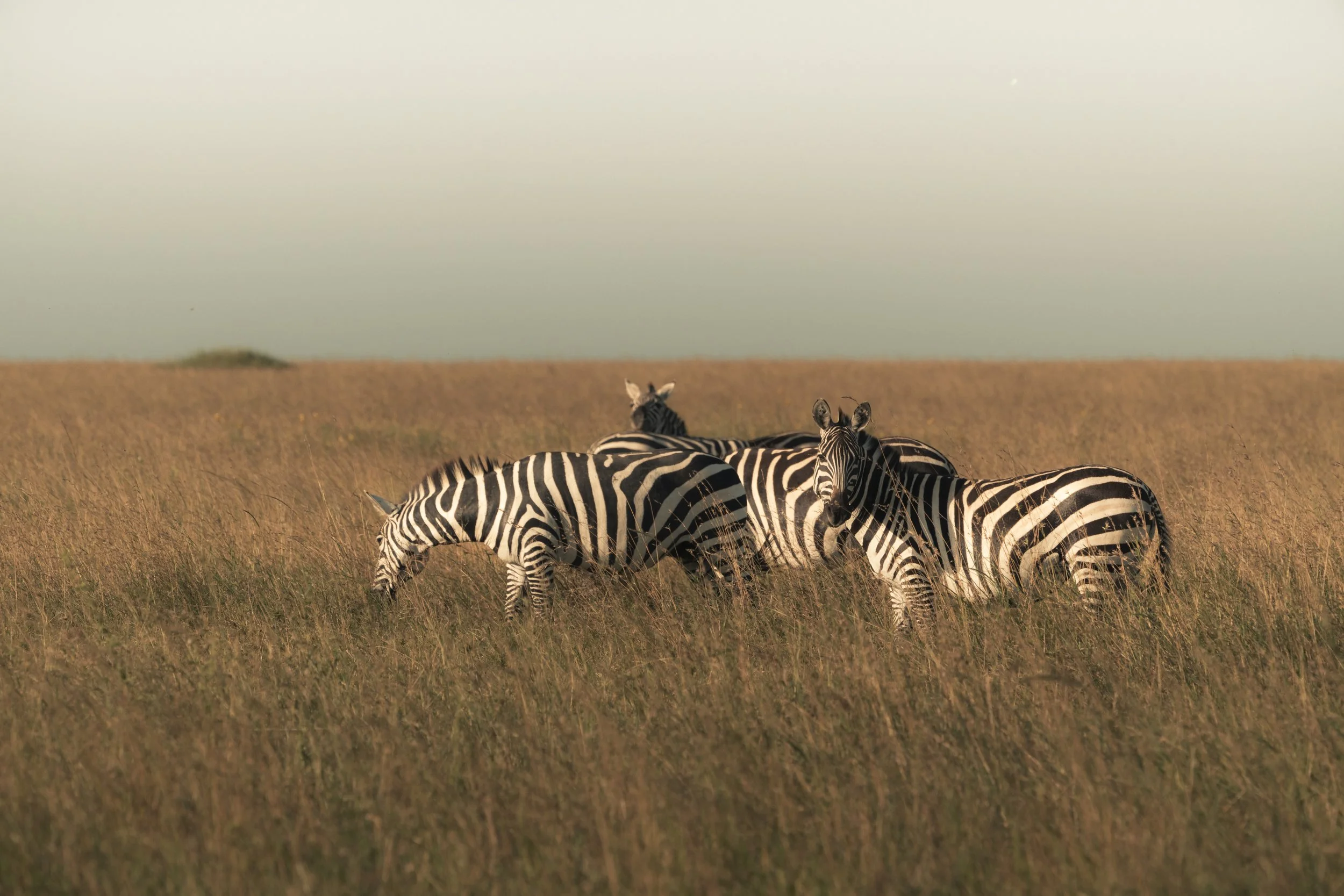Arrival in Serengeti
“ We drive towards the open plains of the Serengeti. A long drive where emptiness feels vast, and the horizon never comes close. ”
From crater to plain
After our visit to the Ngorongoro Crater which is not a crater, we headed to the Serengeti. It was a long drive, and on the way we saw the landscape slowly transform.
Where the Ngorongoro still offered a variety of ecosystems, the landscape outside the crater became increasingly dry and flat. Low grasses dominated the view, interspersed with solitary trees and small groups of acacias.
Ironically, for a resident of one of the flattest countries in the world, it was still impressive. The emptiness here had a different scale. The horizon seems endless and because there are so few landmarks, the clouds seem to float higher. You get an almost surreal sense of space.
Not surprising, because the name “Serengeti” comes from the Maasai word “Siringet”, which means: “the place where the land goes on forever” or “endless plains.”
When European explorers first arrived in the area, they had difficulty pronouncing “Siringet” correctly. The “r” and “ng” sounds in particular proved difficult, and over time the word changed in their pronunciation. This linguistic adaptation eventually led to “Serengeti,” a version that was easier for non-Maasai speakers to pronounce and write.
When the area later gained international fame for its wildlife and natural beauty, the anglicized version stuck — eventually becoming the official name of both the ecosystem and the national park.
The gateway to another rhythm
After a few hours of driving we arrived at the first gate of the Serengeti National Park. There it stood, firm and resolute:
“Serengeti will never die.”
It is a statement made world famous in the 1960s by the Tanzanian conservative Bernhard Grzimek, who fought together with his son Michael to preserve this unique wilderness.
At the gate we were greeted by a group of young Maasai women. They wore colorful jewelry and offered bracelets for a dollar. As I gathered my camera gear, a few were already slid onto my wrist. I found it hard to say no — not because of the money, but because we already had a fair amount of souvenirs and we had seen this scene before. If we said yes every time, we would soon have half a market worth of stuff to drag home.
When it became clear that we would not buy anything, they asked for water. We checked with Jabiri who said it was ok. We had more than enough bottles in the cool box. He did however tell them to return the empty bottles so that they would not end up as waste in nature.
First animals, first worries
We drove on, towards the actual entrance of the park. While Jabiri bent over the necessary paperwork again, we used the toilet and stretched our legs.
Once through the entrance it wasn't long before we saw more animals. Including the now familiar Secretary Bird - with its long legs and elegant crest it remains a fascinating sight.
Not much later, on our way to camp, we came across two lions resting comfortably on top of a rock. Sure, they are predators. But at a time like this, they look more like oversized house cats — lethargic, content, almost cute.
Engine problems in the wild
There was still one problem. In the Ngorongoro crater, which is not a crater, the Land Cruiser would not start. The previous problem in Tarangire had been solved, but now it seemed to be an electronic defect — the gauges on the dashboard were also not working. Jabiri fortunately got the engine going again, with the help of another guide who gave us a push. The problem now is that the car had to be turned on all the time.
Luckily, in the Serengeti, Jabiri knew of a place where a mechanic friend might be able to help. He said he would drive there as soon as he dropped us off at camp. But it was getting dark fast — and because the electronics had failed, the headlights didn’t work either.
Despite that, we got a tip: a cheetah had been spotted nearby. We went looking, but the darkness won out over our enthusiasm. The animal remained untraceable and it was now really time to head for camp. We were still enjoying the magic of the moment, but were worried: Jabiri still had a long way to go without lights, in the middle of the Serengeti.
At our camp
Upon arrival at Serengeti Tortilis Camp we were warmly welcomed. The entire staff sang to us, with the now familiar sounds of the 'Jambo Song'. After a short briefing we were escorted to our tent - although 'tent' is perhaps an understatement.
It felt like a lodge under canvas: a generous bed, a cozy front room to sit outside but still protected from mosquitoes, a separate bathroom with a hot shower, and even an extra space in between with a bed.
In the evening we are escorted to and from our tent. Understandably, because this camp has no fence. The animals live freely here — and that is exactly the intention. As the sun set, we heard the recognizable snorting of hippos on the other side of the hill. We would continue to hear them for the next few nights.
In the main building we enjoyed a delicious dinner, prepared by a cheerful chef and served by very friendly guys.
Where is Jabiri?
We hoped that Jabiri would be back in time to have dinner with us, but as the evening progressed we began to wonder more and more: did he arrive safely at the mechanic's?
We took those worries back to our tent. I wanted to sort out some photos, make backups, and write some more for this blog — but let's be honest: after such long days, that's sometimes just too much. Not least because the internet here has… let's say, its own rhythm.
The photos and videos of Ngorongoro were also waiting for me, but at some point I gave up. Time to dive into bed. Tomorrow we would leave extra early: the plan was to leave before sunrise.
Whether that would work was questionable, given the problems with the car…








